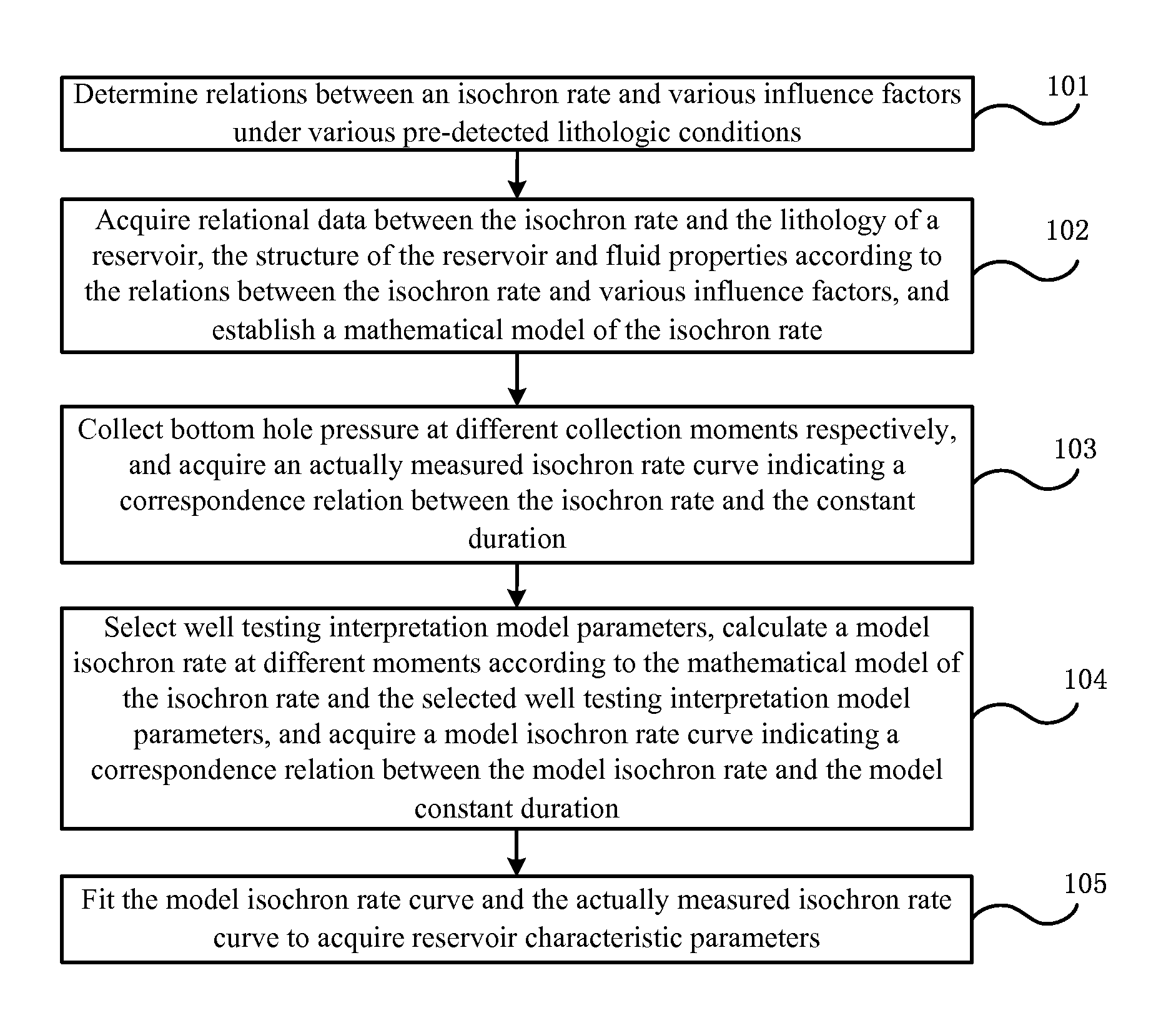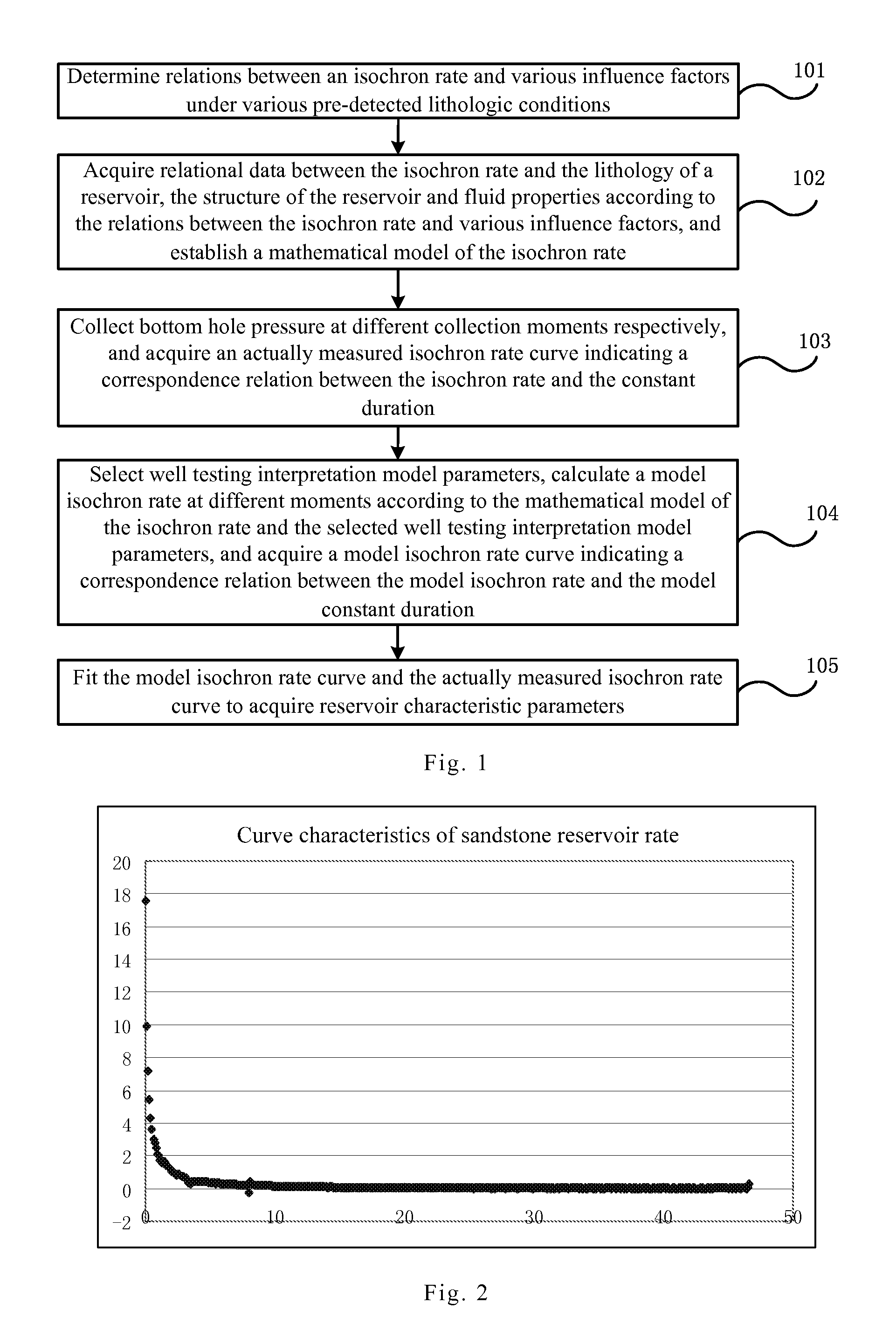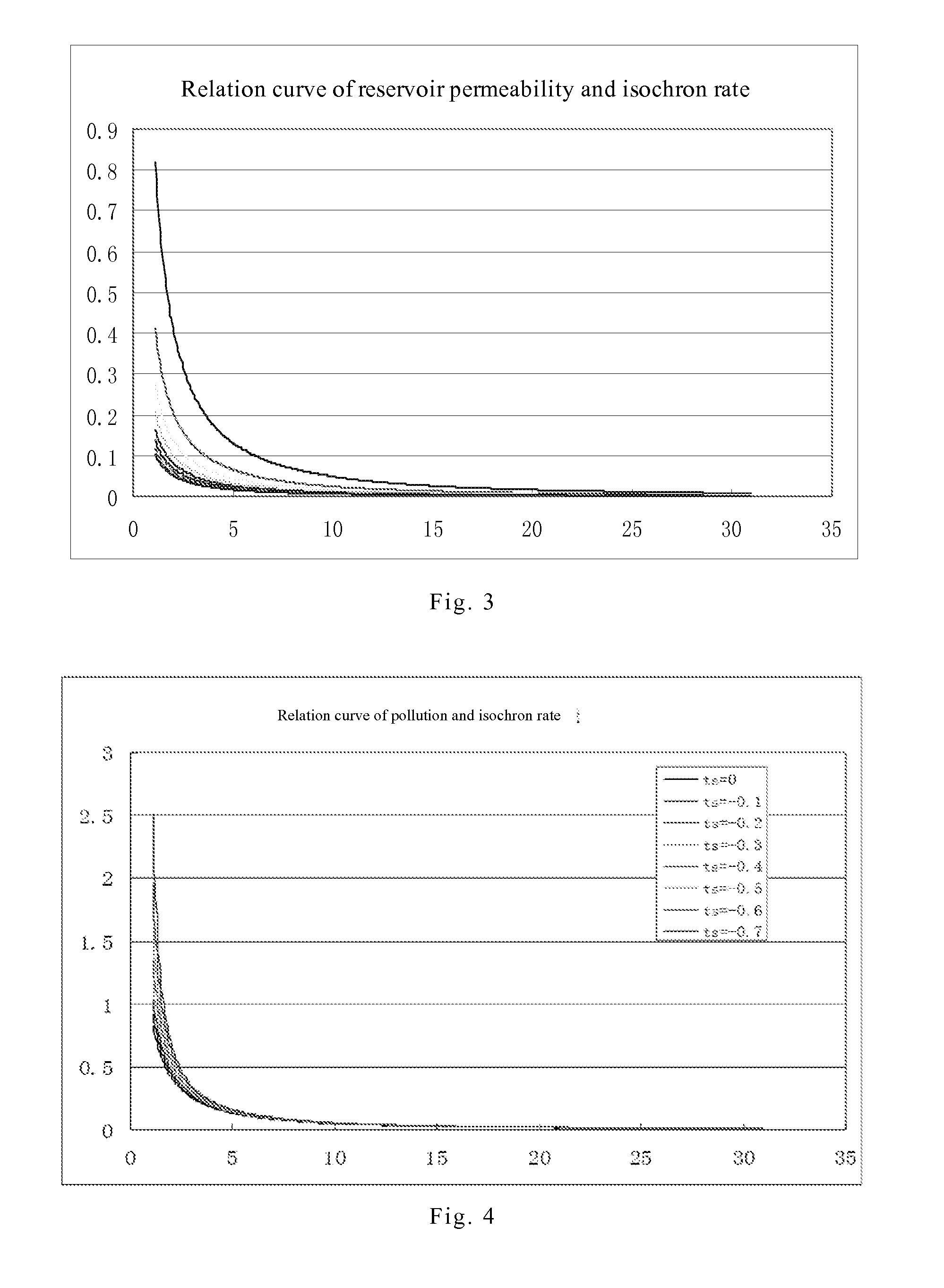However, in practical application, as the exploration and development of oil and gas develops to
low permeability reservoirs and extra-
low permeability reservoirs, on the one hand, the application of a model based on the radial flow theory is restricted due to the influence of non-
Darcy percolation, and the error of well testing interpretation increases; on the other hand, due to unreasonable testing time, the
physical property in
low permeability of reservoirs and other reasons, outstanding problems of poor reservoir flow
conductivity, low production yield, slow pressure conduction and the like are caused, so that well testing data under radial flow conditions cannot be measured during testing, and it is extremely difficult to acquire data which meets the requirements of the radial flow well testing interpretation theory.
Particularly, during testing of extra-low permeability reservoirs, although the quality of testing data may be improved to a certain extent by lots of measures of improving technologies, optimizing testing time and so on, the amount of acquired testing data meeting the requirements of the radial flow well testing interpretation theory is still very low, and lots of testing data cannot be utilized to perform
reservoir evaluation effectively, thereby causing the loss of first-hand data of
reservoir evaluation and analysis, lowering the pertinence of exploration and development as well as reservoir improvement, greatly increasing the cost of testing as well as exploration and development, and causing the outstanding problems of low yield and high investment.
Due to poor physical properties of reservoirs or unreasonable distribution of actual measurement time, lots of
test data cannot reach the required conditions of the radial flow well testing interpretation theory during the well testing process of low permeability reservoirs and ultra-low permeability reservoirs, and acquired data is in the continued flow stage and is generally called as continued flow data, so that conventional radial flow well testing interpretation theories and methods cannot be used for evaluating and analyzing the tested continued flow data, further, reservoir characteristic parameters cannot be acquired through the well testing data and the evaluation and analysis of the data, and the well testing data loses application value.
Because the results of well testing interpretation evaluation cannot be acquired, the reservoir cannot be evaluated and analyzed quantitatively and qualitatively, so that there is a lack of the data for comprehensive analysis on exploration and development of oil fields, and a difficulty is caused for the formulation of an exploration and development scheme of oil fields.
Particularly, after the exploration and development to dense-
lithology reservoirs have been carried out, in a practical formation testing process, the reservoir
percolation capability is low, the pressure conduction performance is poor and it is extremely difficult to acquire radial flow data no matter what testing methods and remedial measures are used in the well testing technology during the operation of evaluation and analysis on
oil field reservoirs, so that it is required to take not only lots of cost for testing but also long testing time, and majority of reservoirs still cannot meet the requirements of acquiring radial flow well testing data.
The well testing interpretation theories and methods based on the radial low
percolation theory cannot be used for evaluating and analyzing continued flow data or forming corresponding theoretical basis and evaluation and analysis methods; during the long-term application research, researchers adopt methods such as the production history of
overlay analysis, the
mechanics correction method, the early time continued
flow time correction method and the
mathematical model of single well and also implement the operations of the
subdivision of flow, the shut-in time correction, the production time compensation and the like, but all the methods and operations cannot do without performing certain empirical correction or
mechanics correction on flow data in order to analyze and process the data, which does not meet the radial flow theory, through the radial flow theory after the data is corrected; however, because there are some problems in the application of the theoretical basis and the established interpretation method is complicated and has large limitation, the interpretation method can only be used for performing
reference analysis in empirically comparative study and
character analysis and evaluation, and cannot meet the requirements of the evaluation and analysis of well testing data and the requirements of
oil field application.
Hence, the radial flow well testing theories and methods cannot be used for
processing, evaluating and analyzing the continued flow data systematically and comprehensively, and the loss of characteristic parameter data of reservoirs obtained by means of well testing has become a primary factor restricting the exploration and development of oil fields.
 Login to View More
Login to View More  Login to View More
Login to View More 


